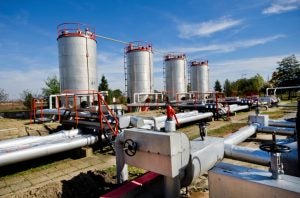Big step back: Changes in new EPA Greenhouse Gas Inventory mask methane emissions
 For years, experts have urged the U.S. Environmental Protection Agency to improve the way it estimates methane emissions from the oil and gas sector to reflect major advances in the peer-reviewed scientific understanding of how much methane is escaping from each link in the industry’s complex supply chain. Bringing agency methods into line with this science would yeild better, more accurate accounting, and it would almost certainly show that actual emissions are much higher than previously indicated.
For years, experts have urged the U.S. Environmental Protection Agency to improve the way it estimates methane emissions from the oil and gas sector to reflect major advances in the peer-reviewed scientific understanding of how much methane is escaping from each link in the industry’s complex supply chain. Bringing agency methods into line with this science would yeild better, more accurate accounting, and it would almost certainly show that actual emissions are much higher than previously indicated.
Instead, EPA has gone in the exact opposite direction, making a million metric tons of methane pollution disappear from the books with the stroke of a methodological pen.
The EPA’s latest inventory released this month, incorporated data from a new study for the gathering segment, but this study uses “bottom-up” measurements that scientists say are likely to systematically underestimate emissions rather than incorporate “top-down” approaches that rely on atmospheric science, and which extensive research has shown to be far more accurate.
Bottom-up studies can include component-level measurements and provide valuable details about which sources are emitting, but tend to underestimate total emissions since large emissions can be overlooked. Bottom-up methods assign an estimated emissions factor to each major type of component used in the field, then multiplying by an estimate of the number of those components used in a given area. In contrast, top-down approaches more accurately measure total emissions but do not provide source-level data. Top-down methods base their estimates on actual field measurements using vehicles, drones, aircraft and satellites, capturing both intermittent and previously unidentified sources not accounted for in the bottom-up factors. Both methods have uncertainty but in combination can provide accurate estimates of total emissions and information on individual sources.
As a result, EPA’s new inventory, which covers emissions through 2018, puts the oil and gas industry’s yearly methane emissions at 7 million metric tons, a huge decrease from the previous 8 million metric ton estimate. Meanwhile, a decade of research by EDF and others suggest the real figure is 13 million metric tons — over 80% higher than the new EPA figure.
Big step back: Changes in new EPA Greenhouse Gas Inventory mask methane emissions Share on XNeed for accuracy
The EPA’s inventory is tremendously important. Scientists and policymakers need accurate and honest data to understand the scope of the emissions challenge and where we should focus reduction efforts. Lowballing climate emissions does nothing to fix our climate problem. More complete data, on the other hand, leads to better understanding and better solutions. Ideally, that means paring bottom-up and top-down approaches to help fill in the gaps that each approach might create.
For example, EDF’s new research in the Permian Basin, the largest oil field on the planet, relies on data from multiple sources, including helicopters, airplanes, stationary towers and vehicles throughout the region to capture a more accurate inventory of the region’s emissions. Initial findings show that the oil and gas industry in a 10,000 km2 study area emits 1.4 million metric tons of methane, equivalent to 3.5% of its natural gas production — three times EPA’s estimated national average upstream leak rate. Another recent peer-reviewed EDF/Harvard study of the entire Permian shows that the TROPOMI satellite measured 2.7 million metric tons of methane annually from the basin.
Ironically, in 2016 EPA updated its inventory estimates for the gathering segment using data from a study¹ that used top-down, site-level emissions to estimate total emissions. But the new inventory switched back to a bottom-up component study².
EPA deserves credit for its continuous improvement efforts and transparent inclusion of new data, but its continued reliance on bottom-up data will not give an accurate estimate of the true magnitude of oil and gas methane emissions.
Responsible government and corporate leaders are working to reduce climate emissions — including methane emissions from the oil and gas industry. But they must have access to metrics they can believe in. In the U.S., that’s supposed to be the EPA’s greenhouse gas inventory. This year’s report, unfortunately, is a missed opportunity and a step in the wrong direction.
_______________________________________________________________________










